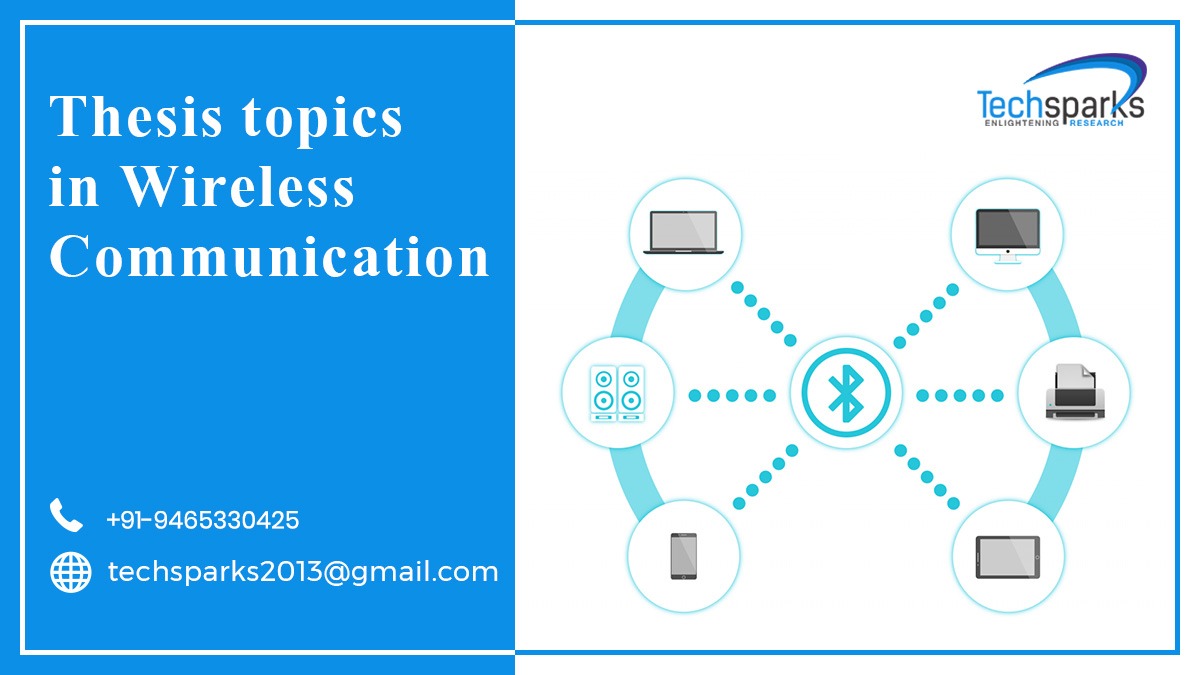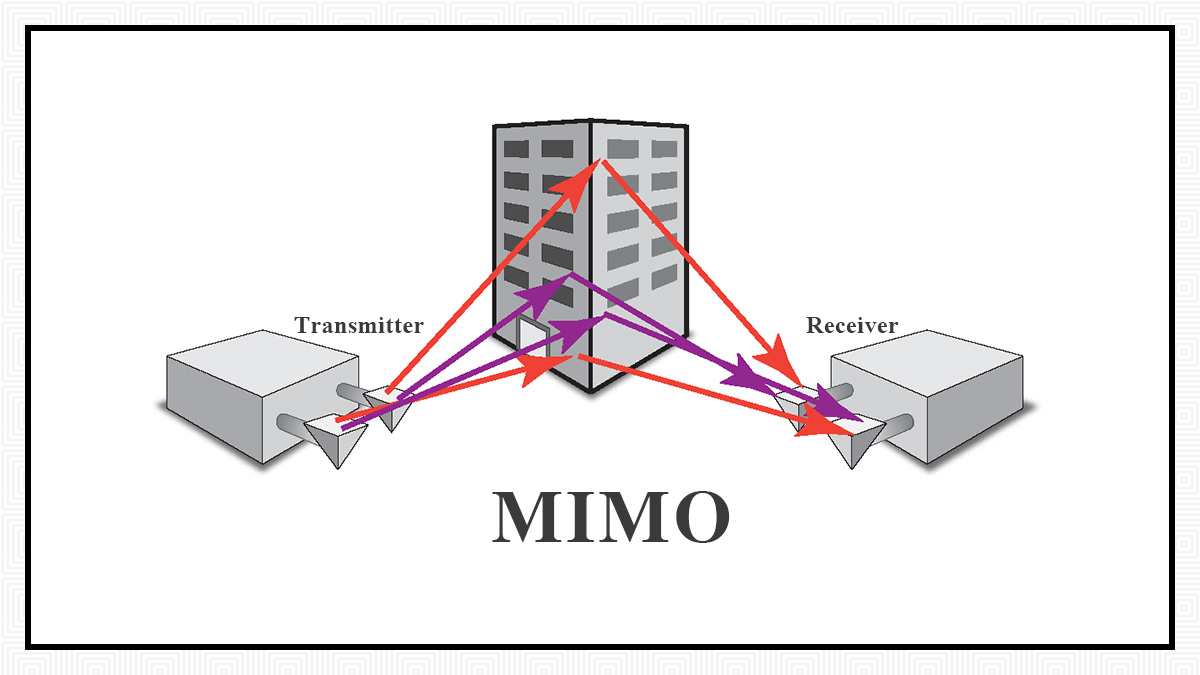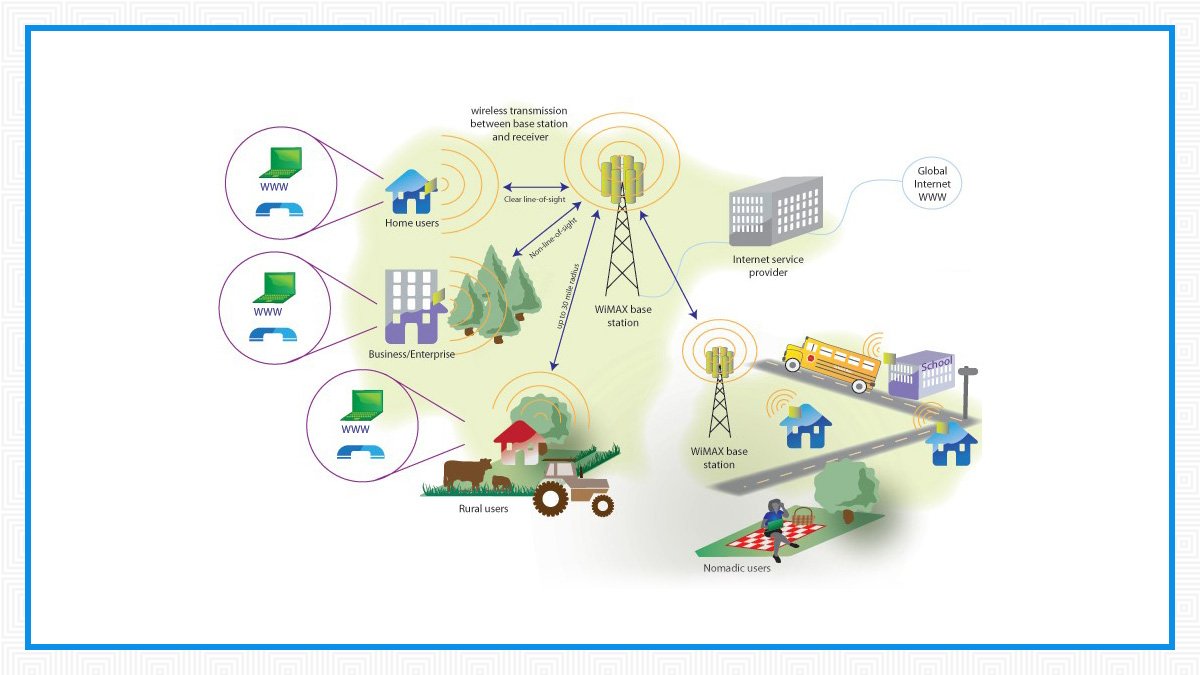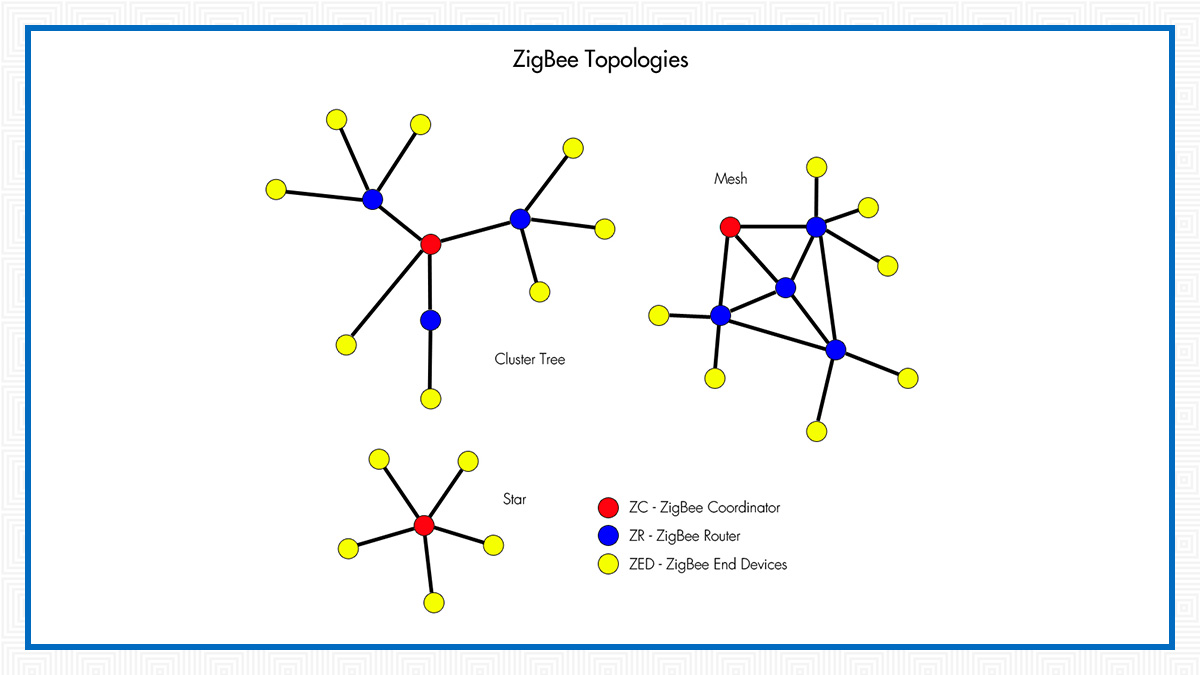Thesis topics in Wireless Communication
Wireless Communication is soon going to replace the traditional wired mode of communication. With the advent of wireless technology, communication has become more convenient and effective. Now there is no need to install lengthy wires to set up the network.
Why?
Wireless technology uses radio waves for communication rather than relying on wires. There are various topics in wireless communication for thesis, project and research.
Following are the list of current thesis topics in wireless communication:
- MIMO(Multiple Input, Multiple Output)
- WLAN(Wireless Local Area Network)
- WANET(Wireless ad-hoc Network)
- WiMax
- IoT(Internet of Things)
- ZigBee technology
MIMO(Multiple Input, Multiple Output)
MIMO is an antenna-based technology of wireless communication in which both sender and receiver uses multiple antennas to enhance the capacity of a radio link. It reduces errors and optimizes data speed by the combining the antennas at each end. It is also referred as a smart antenna technology. It is very good topic for thesis and research in wireless communication.
In traditional wireless communication methods, single antenna is used at source end as well as the destination end. Certain problems arise due to this like scattering of data signals, fading, intermittent reception, reduction in data speed and more number of errors. Due to scattering of data signals, the problem of multipath wave propagation arises. Use of multiple antennas knock-out the problem caused due to multipath wave propagation. Different form of antenna links are:
-
SISO – Single Input, Single Output
-
SIMO – Single Input, Multiple Output
-
MISO – Multiple Input, Single Output
-
MIMO – Multiple Input, Multiple Output
Functions of MIMO
The functions of MIMO can be classified into following three categories:
-
Precoding – It is a spatial process of multi-stream beamforming that occurs at the transmitter. In beamforming, a signal is sent from the transmitter which is amplified while it reaches the receiver. It increases the signal strength and also reduces the multipath fading effect.
-
Spatial Multiplexing – Spatial multiplexing is a technique to increase the channel capacity. In this technique, a signal which is of high-rate is divided into several low-rate signals keeping the frequency channel same. These signals arrive at the receiver end with different spatial signatures. Spatial Multiplexing can be combined with precoding if channel state information(CSI) is available.
-
Diversity Coding – This technique is used when there is no information of CSI at the transmitter. Unlike spatial multiplexing in which multiple streams are transmitted, single stream is transmitted in diversity methods and the signal is coded by the employing the technique of space-time coding. Diversity coding can be combined with spatial multiplexing if CSI is available.
Formats of MIMO
Following are the two formats of MIMO:
-
Spatial diversity – It refers to the diversity in transmitting and receiving and help in improving the signal to noise ratio.
-
Spatial multiplexing – As earlier explained, spatial multiplexing improves the channel throughput capability.
Applications of MIMO
MIMO find its applications in various areas. Following are the main applications of MIMO:
-
MIMO is used in mobile radio telephones in standards like 3GPPP and 3GPP2. HSPA and LTE support MIMO.
-
MIMO technology is also used in non-wireless communication systems like home networking standard to transmit multiple signals.
WLAN(Wireless Local Area Network)
WLAN stands for Wireless Local Area Network. It is a wireless network of two or more devices and uses high-frequency radio waves for communication. This network has an access point to the internet. The communication is for limited coverage area like homes, offices, schools. WLAN is based on IEEE 802.11 standard and commonly referred as Wi-Fi. This network is for commercial use as it is easy to install and use. It is another choice for thesis in wireless communication.
There are two main components of WLAN:
-
Access Point
-
Client
station and which requires access point are referred to as infrastructure base station.
Types of Wireless LAN
There are two types of WLAN based on their mode of operation:
Infrastructure mode
ad-hoc mode
In infrastructure mode, devices communicate through an access point while in ad-hoc mode the devices communicate directly. In infrastructure mode, base station act as the access point hub and all the nodes communicate through that hub. In ad hoc nodes use peer to peer method of communication with each other.
Applications of WLAN
There are many real-world applications of WLAN due to enhanced capabilities than wired network. Following are the application areas of Wireless LAN:
-
Healthcare – Through WLAN, the doctors and physicians can access patient’s data at a faster rate. WLAN can be used to communicate with other doctors in case of emergency situations. The data of a patient’s health at a distant location can also be accessed through this wireless network.
-
Everyday business use – Wireless LAN is used in schools, colleges, and offices according to the requirements. Wi-Fi is commonly used in homes for personal use. In offices, real-time data can be accessed using this wireless network.
-
WLAN hotspots – Many restaurants, hotels and other such commercial areas provide wi-fi hotspots for customers to access the internet. Also, no id and password is required in many cases to join the network.
Challenges in Wireless LAN
There are many challenges in wireless local area network which need to be resolved. Following are the main challenges:
-
Security Issues – There are various security vulnerabilities in Wireless LAN. The main security issues include – unauthorized attacks, denial-of-service attack and passive monitoring. In passive monitoring, an outsider can constantly monitor company’s information through his laptop/desktop. He can capture vital data and information from company and can retrieve company’s email ids and passwords. Denial-of-service attack can disable a company’s LAN. There is also a risk of unauthorized attack.
-
Interference – There is a risk of interference from unwanted radio signals which can disrupt the normal WLAN operation. This can cause delay in transmission and hence reduces the overall throughput. The devices in the network may not be able to access the WLAN leading to network latency and bad user experience.
-
Multipath Propagation – Multipath propagation can cause delay in information being transmitted. There will also be errors during modulation and demodulation. WLAN make use of certain protocols for retransmission of data if the data that the destination receives has error in it. Retransmission leads to lower performance.
-
Battery Limitations – A lot of battery power is consumed while accessing the wireless communication network. There are two modes to conserve the power. Doze Mode keeps the radio off and switched on periodically to check any unseen messages. Sleep Mode keeps the radio in standby mode.
-
Interoperability problems – There are interoperability issues also with WLAN when someone wants to work on multiple vendor devices.
WANET
WANET stands for wireless ad-hoc network. It is a decentralized wireless network. This type of network does not require pre-existing infrastructures like routers and access points for communication. Each node in the network participates in routing and forwards data for other nodes. Routing algorithm and network connectivity are the key parameters to determine which node will forward the data. The nodes in the network are free to move as the wireless ad-hoc network is self-configurable and dynamic. Thesis guidance and thesis help can be taken for this topic from networking experts. Masters students can go for this topic for their thesis.
Applications of Wireless ad-hoc Network(WANET)
There are various applications of wireless ad-hoc network due to its decentralized nature. Quick deployment and less configuration makes them suitable for installing in emergency situations. Following are the main applications of wireless ad-hoc network:
-
MANET – MANET stands for mobile ad-hoc network and is a network of mobile devices connected with each other. The mobile devices are infrastructure-less, self-configurable and self-organizing.
-
VANET – VANET stands for vehicular ad-hoc network. It is network for communication between the vehicles and other equipment on the road. It uses radio waves for communication.
-
SPAN – It stands for smart phone ad-hoc network. It is a peer-to-peer network between the smart phone devices.
-
Military – Army and military personnel use ad hoc network for long range communication. This is used for communication in remote areas and difficult terrains. UAV(Unmanned aerial network) is used by army to collect data and for situation sensing. Navy uses ad hoc network for communication with their counterparts on the land.
-
Wireless sensor network – Wireless sensor network is a wireless network that uses sensors to collect data. These sensors are connected to the wireless network. This data can be used for processing.
-
Disaster rescue – Wireless ad hoc network can be deployed in areas which have recently witnessed a disaster. This network is easy to deploy and configure and will help effectively in disaster rescue operations.
Advantages of WANET
-
High performance of the network
-
No extra infrastructure cost
-
Easy to deploy and configure
Disadvantages of WANET
-
Extremely dynamic topology
-
High degree of adaptability is not there
-
There are no central entities in the network
WiMax
It is an IEEE 802.16 based wireless communication standards and provides multiple physical layer and media access control(MAC) options. It stands for wireless interoperability for Microwave Access. WiMax is designed to provide higher data rates upto 1 giga-bits/s. WiMax operates at higher speed, longer distance with more number of users than wi-fi. It is based on wireless MAN. WiMax Forum created the WiMax. People have knowledge of Wifi but do not know about WiMax. M.Tech students can choose this topic for their master’s thesis and do a research on that.
Importance of WiMax
WiMax is important due to the following reasons:
-
It can satisfy a variety of needs to extend the existing broadband capabilities.
-
It can deliver high bandwidth while keeping the cost of operation low.
-
It can meet the ever-increasing customer demands
-
It has more coverage area and better quality of services
-
It can be integrated with the existing technologies
WiMax services
WiMax provides following two types of services:
-
Non-line-of-sight – In this type of service, a small antenna is used to connect the computer to the WiMax tower. It uses a low frequency range from 2GHz to 11GHz.
-
Line-of-sight – In this service, a fixed antenna on the rooftop connects to the WiMax tower. It is more stable than non-line-of-sight and can send large amount of data with fewer errors.
Components of WiMax
A WiMax system has the following two components:
-
A WiMax tower – Same like cell-phone tower
-
A WiMax receiver – A small box
A WiMax tower connects to the high-speed internet through a wired connection of high bandwidth. It can also connect to the other WiMax tower using line-of-sight service. Through this connection with the tower, WiMax provides service to a large coverage area.
Features of WiMax
-
Coverage area upto 50 km from base station
-
Speed upto 70 megabits per second
-
Line-of-sight not required between the user and the base station
-
Frequency bands of 2-11 Ghz and 10-66 Ghz
IoT(Internet of Things)
Internet of Things is a wireless connection of devices for collection and sharing of data. In other words, it refers to ways by which internet is embedded to different devices. This technology is going to govern our life in near future. Every day-to-day activities will be controlled by the internet.
Features of IoT(Internet of Things)
Following are the feature of Internet of Things(IoT):
-
Artificial Intelligence – IoT will make our life ‘smart’ with the invention of various smart devices that can operate on their own using artificial intelligence algorithms.
-
Connectivity – IoT will create small networks between the devices at a cheaper rate. There will be new technologies in networking.
-
Sensors – Sensors are essential components of IoT enabled devices. Through sensors, surrounding data can be measured.
-
Active Engagement – IoT provides active product, content and service engagement.
-
Small Devices – Smaller but powerful devices are built which will have high scalability and versatility.
Advantages of Internet of Things(IoT)
Following are the main advantages of Internet of Things:
-
The customer engagement is improved with rich and effective engagement.
-
The technology is optimized in the sense that the devices used in the network and technology employed will be improved.
-
Internet of Things will lead to more effective management of resources thereby reducing waste.
-
The data collection will be more enhanced and accurate.
Disadvantages of Internet of Things(IoT)
-
There are security issues as the network is vulnerable to different kind of attacks.
-
There is risk of private information of user getting leaked.
-
The designing, deployment and maintenance of entire IoT network is complex.
ZigBee Technology
ZigBee is a low-cost and low-power wireless technology for machine-to-machine(M2M) and IoT networks. Mesh networking protocol is used for avoiding hub devices. The data is transferred at a low rate. It is based on IEEE 802.15 standard. ZigBee alliance maintain the specifications of ZigBee. Students from electronics and communication and networking field can opt this topic for their thesis.
Mesh Networking in ZigBee
ZigBee protocol uses mesh networking and architecture for communication. A mesh network make use of any one from full mesh topology and partial mesh topology.
In full mesh topology, each node is connected directly to all other nodes. In partial mesh topology, some of the nodes are connected to all other nodes while other nodes are connected to those nodes with which they want to exchange data. There are three type of nodes in ZigBee – coordinators, routers and end devices. The role of each node is different. Coordinators collect and store information. Routers are intermediates to coordinator and end devices. End devices are low-powered devices which interact with coordinator and router.
Advantages of ZigBee
The main advantages of ZigBee technology are:
-
Low cost
-
Deployment is easy
-
Power consumption is low
-
Data transfer is secure
-
Innovation is rapid
These were some of the trending M.Tech thesis topics in wireless communication. Apart from these, other main research areas in wireless communication include 4G/5G technology, energy harvesting, optical fiber communication, and wireless sensor networks. Contact us for any type of thesis and research help from the field wireless communication for M.Tech and Ph.D.







Leave a Reply